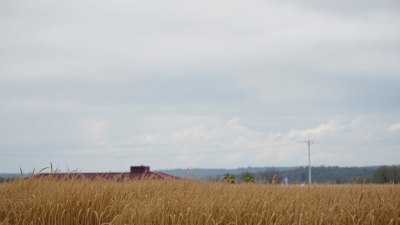How Shared Shade Can Mean More Than Words
Explore the profound significance of sharing shade, symbolizing connection, comfort, and unspoken bonds beyond words.

In the sweltering heat of a summer day, the simple act of sharing shade can transcend mere physical relief. It becomes a silent gesture of empathy, solidarity, and understanding that often speaks louder than the most eloquent words. This seemingly small moment can carry significant emotional weight, creating subtle yet powerful connections between individuals. Whether in bustling city parks, on sun-soaked streets, or at quiet countryside retreats, the shared refuge beneath a tree or an awning can symbolize an unspoken bond, a moment of harmony amidst the heat and noise of the world.
Shade, in its literal sense, offers protection from the sun’s harsh rays, reducing temperature and providing respite. However, as a metaphor, it encapsulates a broader human experience—offering comfort not only against the elements but also against life’s hardships. People instinctively seek shade not just to escape physical discomfort but to find a place of solace and security, often in the company of others. This universal inclination highlights a deep-seated desire for connection and mutual support that transcends cultural and social boundaries.
Historically, trees and shaded spaces have served as natural gathering spots where communities congregated to rest, converse, and share stories. In many cultures, elders and youth alike have found shelter under the sprawling branches of a tree, exchanging knowledge and experiences in a context enriched by nature’s calm. This shared shade space encourages inclusivity and openness, fostering interactions that may otherwise not occur in more formal or insular settings. The symbolism of shared shade thus embodies not only protection but also community and belonging.
In urban environments, where concrete and asphalt dominate and natural shade is scarce, the presence of shaded spaces becomes even more precious. City planners and architects recognize the importance of green spaces and shaded areas for public well-being, understanding that such places reduce stress, encourage social interaction, and promote mental health. The act of sharing shade in these environments can break down social barriers, as people from different walks of life momentarily come together, united by a common need. This subtle convergence can lead to moments of spontaneous camaraderie, wordless understandings, or the spark of new relationships.
Psychologically, shade has been linked to a sense of safety and privacy. When individuals sit or stand under a shaded canopy with others, they often feel less exposed and more at ease. This comfort can facilitate vulnerability and openness without necessarily requiring verbal communication. The ambiance of shade softens the harshness of the sun and metaphorically softens interpersonal tensions, allowing for a quiet companionship that nurtures emotional well-being.
Moreover, the experience of sharing shade often involves unspoken reciprocity. One person offering a spot of shade to another is an act of kindness and generosity, embodying care and consideration. This exchange is rarely transactional; instead, it resonates on a human level, affirming shared humanity and compassion. In many instances, the person extending their shaded space does so without expectation of thanks or reward, highlighting the intrinsic value of altruistic behavior.
The dynamics of shared shade can also mirror broader social relationships and hierarchies. For example, offering shade to someone in need may signify protection or guardianship, while seeking shade from another can imply trust or dependence. These nuances subtly reinforce social bonds and roles within communities, from familial ties to friendships and even fleeting acquaintances. The layered meanings behind shared shade reveal the complexity of human interaction beyond spoken dialogue.
In literature and art, shade frequently symbolizes refuge and relief. Poets and painters have long captured the imagery of people beneath trees or under awnings, suggesting moments of contemplation, peace, or shelter from turmoil. This visual and literary motif enriches cultural understanding of shade as more than a physical phenomenon, but as an emotional and spiritual sanctuary. When we share shade, we partake in this timeless tradition of seeking and offering sanctuary.
Technology and urbanization have altered the way we experience shared shade. The rise of air-conditioned spaces and digital entertainment can sometimes reduce opportunities for physical proximity and spontaneous interactions in shaded outdoor environments. Nevertheless, the fundamental human need for connection and comfort through shared space remains. Efforts to preserve and create shaded communal areas in parks, plazas, and streetscapes reflect a conscious recognition of these needs and an attempt to maintain the subtle social fabric woven by such moments.
The metaphorical resonance of shared shade extends to other life situations—offering a 'shade' of support during emotional hardship, standing in solidarity during social challenges, or simply providing a quiet presence during times of stress. These figurative interpretations emphasize the unspoken layers of communication and understanding that enrich human relationships and social cohesion.
Environmental awareness also plays a role in appreciating shared shade today. With climate change increasing the frequency and intensity of heatwaves, shaded areas become crucial for public health and safety. Urban forestry and green initiatives seek to expand natural shade, recognizing its role not only as a comfort but as a necessity for sustainable living. Sharing shade in this context symbolizes a collective effort toward resilience and adaptation, reinforcing communal responsibility and care for the environment and each other.
An example from everyday life illustrates how shared shade can deepen bonds. Two strangers waiting for a bus might instinctively move close under a modest bus stop awning, exchanging smiles or brief nods. This mutual act creates a shared space of calm amid the bustle and heat, momentarily linking their separate stories. Though no words are exchanged, the gesture acknowledges their shared humanity and need for comfort. Such instances, though fleeting, highlight the small yet meaningful ways shared shade fosters connection.
In educational settings, shaded outdoor areas can cultivate informal learning and collaboration. Students sitting together beneath a tree often engage in exchanges that are freer and more relaxed than in enclosed, formal classrooms. This natural backdrop encourages creativity, trust, and peer support, essential elements of effective learning. The shared shade setting thus contributes to building community and enhancing communication beyond the classroom’s rigid boundaries.
Shared shade also encourages mindfulness and presence. Being physically close under a calming, sheltered space prompts people to slow down, to be aware of their surroundings and each other. This presence encourages a form of silent communication and collective breathing that nurtures empathy. Such moments can be restorative, offering a break from the rapid pace and noise typical of modern life.
Finally, the symbolic power of shared shade reminds us of the importance of generosity and care in everyday interactions. It can inspire us to consider how we might offer shelter—literal or metaphorical—to others, creating small havens in the daily grind. Through the simple, universal gesture of sharing shade, we access a richer dimension of human connection that often remains unnoticed, revealing that sometimes, presence and companionship mean far more than words.











